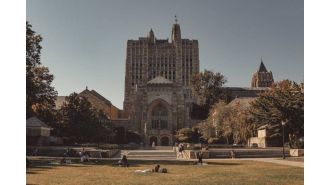This Bud Lite’s Not For You, Amigo
Case studies are a great way to learn. If you get an MBA, you will study lots of examples of what happened in the real world. They are very instructive.
One of the most recent interesting case studies is the Bud Light School of Marketing’s recent program to destroy America’s leading beer brand.
The Company
Bud Light is made in America by Anheuser-Busch (founded in the 1850s) which is owned by ABInBev, a company headquartered in Belgium. InBev acquired Anheuser-Busch in 2008.
ABInBev makes more than 600 different beers in 150 countries and is a huuuuuuge company — global beer market share is 40.4% — with its global operating headquarters in New York.
The company traces its roots back to 1366 and the founding of the Artois brewery in Belgium.
A public company, it is controlled by:
Belgian families Vandamme, de Mévius and de Spoelberch, who own approximately 29%
Brazilian investors Jorge Paulo Lemann, Carlos Alberto Sicupira and Marcel Telles, who own 23% through their private investment firm 3G Capital
These two entities control more than 50% of the stock of ABInBev. 3G Capital has a reputation for fierce expense control and successful turnarounds.
The company has a complicated structure and its stock is traded on a number of exchanges including the New York Stock Exchange.
Who runs the show, Big Red Car?
The management team is as follows:
Michel Doukeris – Chief Executive Officer since July 2021, he has a masters in marketing and post graduate marketing studies at Kellogg and Wharton. He was previously the head of sales globally (2016) and then ran the entire North American business unit. Salty marketing dog.
Marcel Marcondes — Chief Marketing Officer since April 2022, he has an MBA and was formerly the Anheuser-Busch Chief Marketing Officer where he would have overseen the Bud Light marketing program. He is a Unilever brand management expert.
Brendon Whitworth — Chief Executive Officer of North American ops since July 2021, he is a Harvard MBA and was formerly the US Chief Sales Officer. He spent 8 years in the USMC and as a CIA spook.
This is a seasoned and talented team with first rate marketing chops.
Who really ran the show, Big Red Car?
Ahhh, down in the trenches that would be:
Alissa Gordon Heinerscheide — VP in the Bud Lite brand for the last 10 months, currently on a leave of absence, she is 39 and has a liberal arts degree from Harvard and an MBA from Wharton. She’s been in progressively more responsible positions around value beers and Bud Lite.
Daniel Blake — Group VP of Mainstream brands, Heinerscheide’s boss and a University of Virginia Darden School MBA grad
Todd Allen — Global Marketing VP for Budweiser and the replacement for Daniel Blake
Anomly — New York based hot ad firm with a reputation for breaking out of the box and Adweek’s 2022 US Ad Agency of the Year, they were retained in August 2022 by Heinerscheide to shake things up, subsequently terminated
So, what happened, Big Red Car?
Depending upon who you believe the story unfolds like this:
1. Alissa Gordon Heinerscheide decides that Bud Lite needs to shake up its “fratty” image and “out of touch” humor to become more inclusive. She seeks to attract “young people.”
She states in an interview that championed her rise to her lofty position that Bud Lite is a product in decline when in reality it stood atop the sales charts as America’s #1 beer.
2. In retrospect, many folks at Bud Lite contest that the beer had a fratty image saying it was more of a blue collar, sports enthusiast, muscle worker, everyman beer, and the beer was not in decline and in need of such a radical approach.
Further musing suggests the potential for growth amongst young folks — who are drinking craft beers made by ABInBev — is not a highly plausible outcome.
Management — in the person of Brendon Whitworth — say the error was right here.
3. Anomly and Alissa created an influencer program by partnering with one Dylan Mulvaney, a transgender beer enthusiast. It is a hip, cool, culture forward campaign, but it is unrooted in any reality of the existing core customer base for Bud Lite.
They had promotional materials created, shipped the materials to Dulvaney, and Dulvaney took the campaign to TikTok and other social media to applaud the brand. [She said she was not really a beer drinker, but she was being paid.]
4. At no time did Alissa or Anomly focus group the campaign or consider the impact on Bud Lite’s core customers.
Alissa let an ad agency take a completely different path than ever before in the history of the brand and did not even bother to focus group it.
5. The results was an immediate outburst of revulsion from the existing customer base, a 25% drop in Bud Lite sales, a $5B drop in the market value of the stock of the parent, the loss of the #1 spot on the value beer hit parade, and a predictable knee jerk cultural boycott.
6. Heinerscheide and her boss Daniel Blake were placed on a leave of absence and Todd Allen stepped in to fill the gap.
Anomly was terminated.
7. After an inartful initial response, CEO of North America Brendon Whitworth stepped in and said words to the effect, “Come on man, it was one campaign, one influencer, one little tiny mistake, the ad agency made the cans, we put everybody on a leave of absence, and we fired the ad agency.”
Can’t we just be friends? Haven’t we earned your loyalty?
Brendon fails to close the deal and the market shifts away from Bud Lite and competitive brands soar.
8. As it turned out, the market is not impressed and Bud Lite has continued to see a loss of 25% +/- of gross revenue and has dropped from #1 to #2 in popular beer sales in the value category going into the summer, the top sales season for beer.
So what went wrong, Big Red Car?
I believe four fundamental things went wrong.
1. A young marketing woman — her gender is irrelevant — decided to pursue a personal initiative after 10 months on the job that was grossly unfounded in reality, retained a cutting edge “woke” ad agency who predictably produced a “woke” campaign in a highly sensitive slice of our culture.
They were sticking their thumbs in the eyes of the Bud Lite drinker and his tool belt.
2. Alissa Heinerscheide and Anomly did not do the basic research to establish who Bud Lite’s customers were and contemplate how they might react.
They were totally clueless believing their wokeness was more important than the vendor-customer relationship built over more than four decades.
Bud Lite was first introduced in 1982.
3. They targeted an influencer campaign so narrowly focused — young transgender value beer enthusiasts — as to be non-existent.
WTF is the addressable market represented by this type of influence? I think it may be seven people.
4. Nobody tested the campaign’s efficacy prior to launch — no focus groups, no contact with the existing customer base, no analytical work to determine the size of the addressable market, and any potential customer losses.
Bottom line it, Big Red Car
Marketing is still marketing whether it is the transition from ICE (internal combustion engine) to EVs or beer.
If you have a brand that is working you have to go slow when you are doing things your existing customer base may find offensive.
You have to know your numbers — Bud Lite was not in decline.
You have to know your customers — Bud Lite is not likely to draw a woke crowd.
The woke crowd for value beers is not deep.
You have to supervise your subordinates.
But, hey, what the Hell do I really know anyway? I’m just a Big Red Car.
I was never a Bud Lite drinker and I don’t currently drink, but I can assure you that a can or bottle of Bud Lite will never touch my lips for the rest of my life.
You are dead to me, Bud Lite.
Have a great weekend and drink a beer for me.







